Our Impact
There is an abundance of growers and producers in Chicago, helping restore connection to land and place by growing food for their neighbors. In partnership with organizers and community organizations, they respond to the various and multi-faceted needs that exist within communities.
But this network of growers, producers, and organizers needs support because they’re providing an essential link to food for residents across the city. In Chicago, one out of six residents is at risk of being food insecure, but in predominantly Black and Brown neighborhoods on the South and West sides, food insecurity affects 56-85% of the population.¹
Community Food Navigator works directly with growers, producers, educators, and organizers to navigate Chicago’s food ecosystem through a community-powered model led by our Community Stewards.
¹ Gundersen, C., A. Dewey, A. Crumbaugh, M. Kato & E. Engelhard. Map the Meal Gap 2017: A Report on County and Congressional District Food Insecurity and County Food Cost in the United States in 2015. Feeding America, 2017.
How we are engaging
Started in the midst of the pandemic, we brought together food growers, producers, and mobilizers to develop the Community Food Navigator app. The app connects us to each other, provides opportunities for collaboration, and helps us share information and resources.
As we emerge from the pandemic, we have added in-person action-oriented spaces to increase ownership and influence across the food value chain while sharing and activating community stories, successes, and access to increase visibility about how local food systems do and do not support local communities.
Our long-term vision as defined by our community is to expand access to healthy food through community-driven solutions that result in:
- Available financial, natural, and technical assistance resources for those growing food
- Strengthened ownership and control by Black, Brown, and Indigenous residents of their local food value chains, and
- Measurable shifts in eating and food buying behaviors among Black, Brown, and Indigenous residents in communities with food inequities.
This vision will take sustained effort and time, but our communities remain committed to co-creating community-led solutions together.
